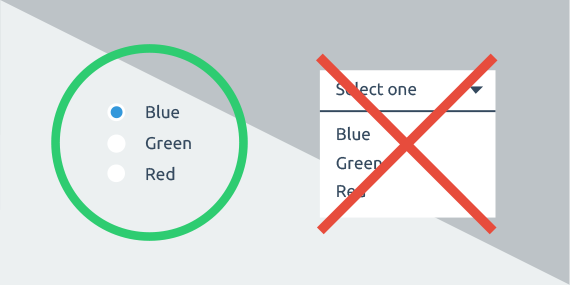Last Updated on July 6, 2023 by UX World

A good user experience promotes your business, whereas a poor experience will damage your reputation. However, despite its importance, many organizations still make common UX design mistakes that inadvertently sabotage their conversions. From confusing navigation to slow-loading websites, these mistakes can frustrate users and force them to go to your competitors.
It is critical to design a smooth and hassle-free user experience. If you have a triumph to provide an excellent user experience, you must avoid these common mistakes which beginners usually make.
This article will explain a few common UX design mistakes that can stop your business growth. It also involves a few practical tips to address these mistakes and implement effective UX design strategies.
1. Slow Loading Time
One of the most common UX design mistakes that can significantly impact your business is slow loading times. In our fast-paced world, users have little patience for websites that take forever to load. Research has shown that even a one-second delay in page load time can result in a 7% reduction in conversions. Not only will slow loading times frustrate your users, but they will also have a detrimental effect on your search engine rankings.
To fix this issue, start optimizing the performance of your website. Compress images, minify CSS and JavaScript files, and leverage browser caching to reduce loading times. Regularly monitor your website’s performance using tools like Google PageSpeed Insights or GTmetrix and make necessary optimizations to keep it running smoothly.
2. Inconsistent Design
Nowadays, there is so much variety in design choices and trends that you can add multiple design ideas to your website. However, doing so may lead you toward an inconsistent design. You must use consistent UI elements and design behaviors throughout your application or website.
If you use different design patterns and user interface elements, then your users might get confused. They will not be able to relate similar information and thus can leave your website with no positive feedback.
3. Irrelevant CTA
Call to Action (CTA) buttons are used in websites that ask your users to perform the desired action. Many websites make the mistake of using generic or uninspiring CTA buttons that fail to capture users’ attention and encourage them to take action.
Your CTA must tell your users what action you are asking them to perform. Make your CTA buttons visually appealing by using contrasting colors that stand out from the rest of the page. Consider adding urgency using words like Limited Time Offer or Only X Left. If your CTA fails to communicate the correct information, your users will not be able to catch up with your idea.
4. Overloaded Information
Do not make your website too rich with information, UI elements, and designs. A cluttered and confusing layout can overwhelm users and make it difficult for them to focus on the critical functionality of your website. Too many distracting elements, excessive use of colors and fonts, and poor visual hierarchy can all contribute to a confusing user experience.
This can confuse your users and divert their attention from the real purpose of using your website.
To simplify the layout of your website, start by decluttering unnecessary information. Remove any elements that do not directly contribute to the user journey. Use whitespace to give your content breathing space. Pay attention to your visual hierarchy, ensuring elements like call-to-action buttons are easily accessible. Choose a color scheme and font combination that is visually appealing and enhances readability.
5. Poor Navigation
Simple and intuitive navigation is essential for guiding users through your website and helping them find the required information. However, many websites make the mistake of implementing complex navigation menus that confuse users and make exploring difficult.
Improper navigation is the root cause of the failure of your website. Navigation buttons must be visible to your user. You must ensure that users can go smoothly from one page to another. If they need to search for something on your webpage, they can easily search for it.
Consider implementing drop-down menus or mega menus for websites with huge content. Additionally, ensure the navigation menu is prominently displayed and easily accessible anywhere on your website.
6. Neglecting Responsive Design
With the increasing use of smartphones and tablets, a responsive design and mobile optimization are no longer optional. If your website is not optimized for mobile devices, you are missing a significant portion of potential conversions.
To address this issue, start by adopting a responsive design approach. A responsive design will automatically adapt to different screen sizes and thus provide a seamless experience across multiple devices.
Test your design on different screen sizes to ensure it works correctly. Give attention to touch-friendly elements like buttons and menus, ensuring they are easy to tap and navigate. Also, optimize the loading time for mobile devices by minimizing file sizes and leveraging browser caching.
7. Giving More Importance to Aesthetics
Currently, there are many design choices that designers may select most of them and make their websites very rich in design and aesthetics. But remember, good visual design and aesthetics only are not sufficient. What matters the most is the functionality of your website. If your website is charming and appealing but fails to provide a good user experience, it lacks everything.
Using too many design colors and shades might distract your users. So you have to create a balance between both aesthetics and functionality. Take an example of a calculator on your laptop or phone. Its function is only to calculate values for you. Now if you put extra design features like fancy buttons, fancy backgrounds, different sounds, or fancy displays, you would focus all of your attention on the fancy design instead of improving the experience.
8. Ignoring User Feedback
While designing, you must know what your user wants from you. Ignoring user feedback or neglecting usability testing can result in missed opportunities for improvement and continued poor user experiences.
To address this issue, actively seek and listen to user feedback. Conduct surveys, interviews, or usability testing sessions to gather input on how users perceive and interact with your website. Pay attention to common pain points, frustrations, and suggestions for improvement.
Use this feedback to make iterative changes to your UX design and test the effectiveness of those changes through A/B testing. By continuously improving your website based on user feedback, you can create a user-centric experience that enhances your business.
Conclusion
In today’s world, an incompetent design will lead you towards failure because of very high competition in the market. By avoiding common UX design mistakes and implementing effective strategies, you can create a seamless and enjoyable user experience.
Regularly monitor and analyze the performance of your website. Listen to user feedback, and make iterative improvements to enhance the user experience. With a user-centric approach to UX design, you can grow your business and increase revenue.
Want to Learn UX Design?
Try Interaction Design Foundation. IxDF offers online design courses that cover the entire spectrum of UX design, from foundational to advanced level. As a UX Design World reader, you get 25% off your first year of membership with the IxDF.
Thanks for reading.
Subscribe for more related articles at UX World.
If you have any questions, contact us here: Facebook | YouTube | Twitter | Instagram | Linkedin



